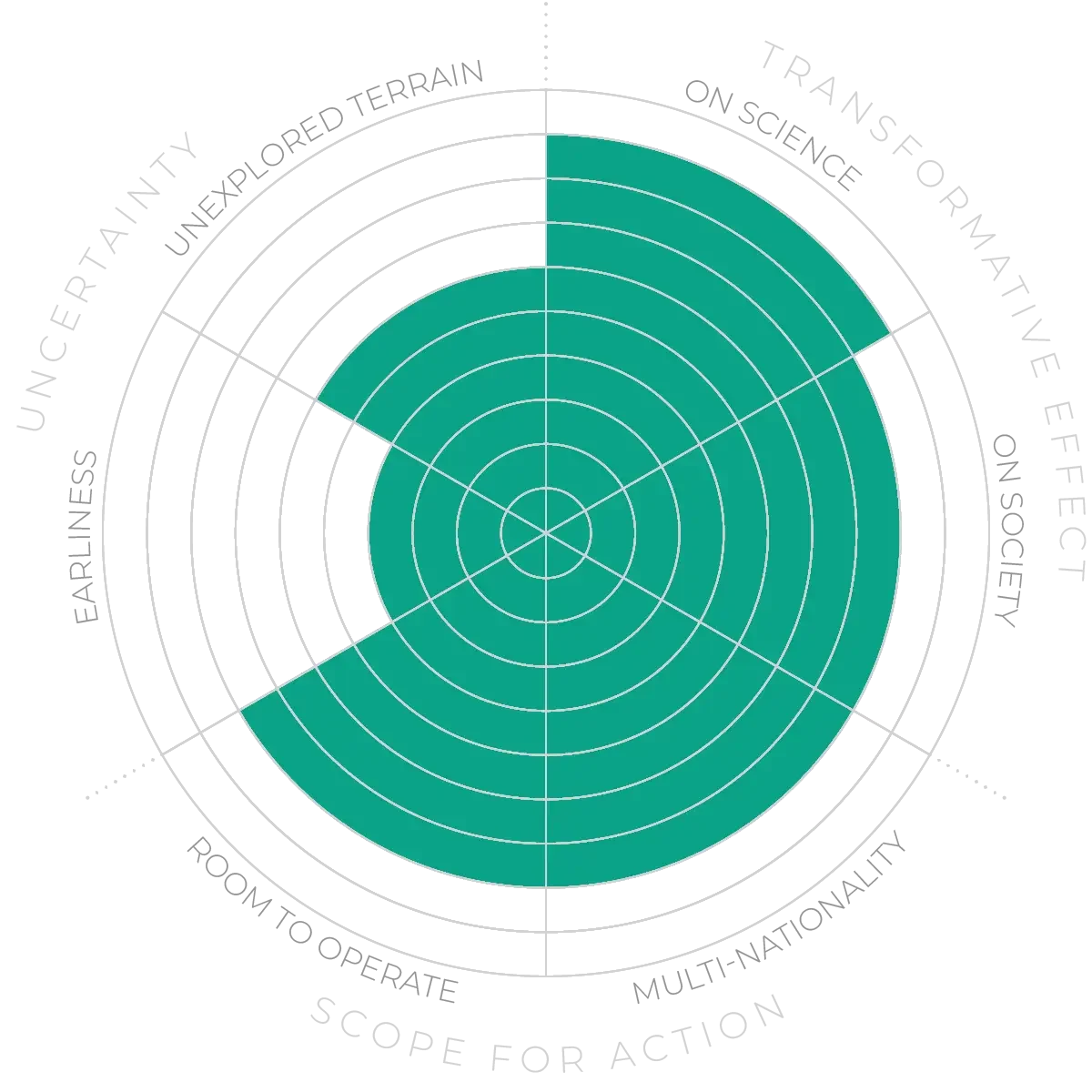Future Horizons:
10-yearhorizon
Building codes embrace albedo brightening
25-yearhorizon
Crops assist albedo brightening
One prominent method is to paint roofs white or other pale colours. This can have direct benefits to the local populations, including mitigating the worst effects of heatwaves. Furthermore, the cost is relatively low.21
In areas not covered by buildings and roads, plants with light-coloured leaves can also change the local albedo. This is cited as a potential downside of planting additional trees on grassland areas: trees are typically darker than grass, so they lower the albedo and may thus contribute some warming. There is also ongoing research into engineering paler crop plants, a task in which synthetic biology may play a role.22
At the more extreme end of the scale, there are proposals to artificially regrow Arctic sea ice, perhaps by spraying tiny particles of silicon dioxide to encourage ice formation, or by pumping huge volumes of cold water up from the deep sea. In theory, schemes like these could restore a large area of reflective ice surface. However, the feasibility and costs are uncertain, and there may be unforeseen negative environmental consequences.23
Terrestrial solar radiation modification - Anticipation Scores
The Anticipation Potential of a research field is determined by the capacity for impactful action in the present, considering possible future transformative breakthroughs in a field over a 25-year outlook. A field with a high Anticipation Potential, therefore, combines the potential range of future transformative possibilities engendered by a research area with a wide field of opportunities for action in the present. We asked researchers in the field to anticipate:
- The uncertainty related to future science breakthroughs in the field
- The transformative effect anticipated breakthroughs may have on research and society
- The scope for action in the present in relation to anticipated breakthroughs.
This chart represents a summary of their responses to each of these elements, which when combined, provide the Anticipation Potential for the topic. See methodology for more information.



